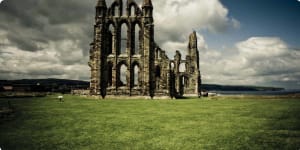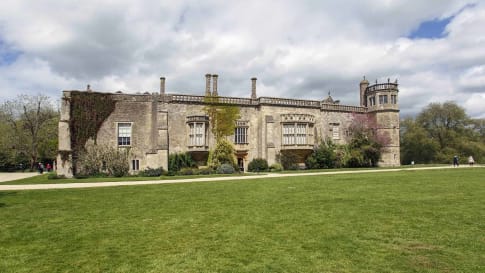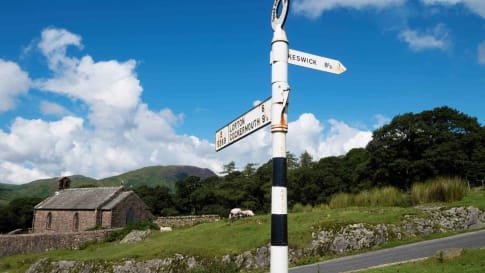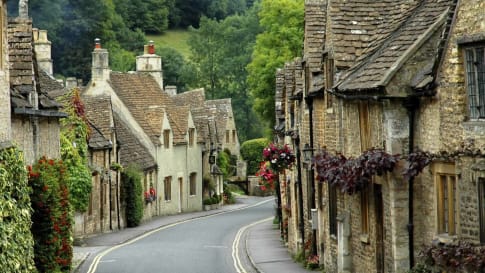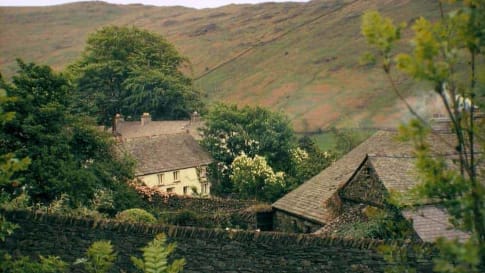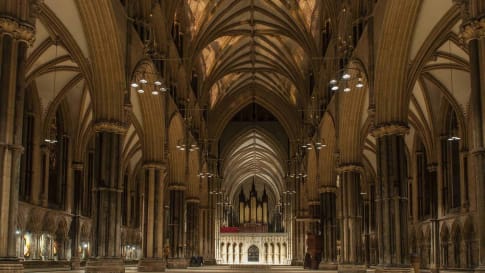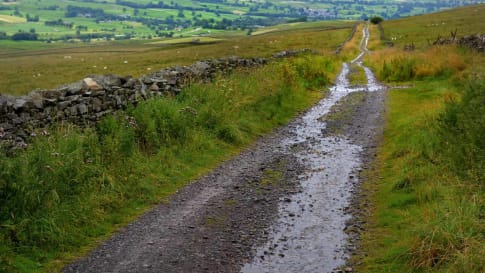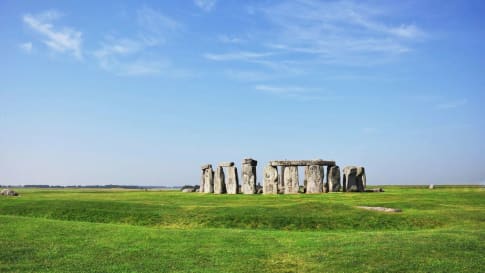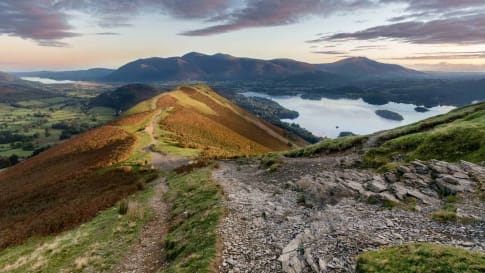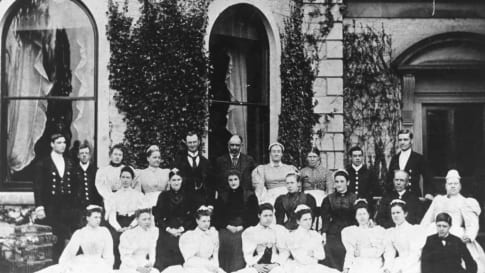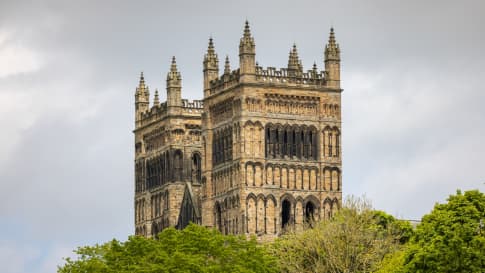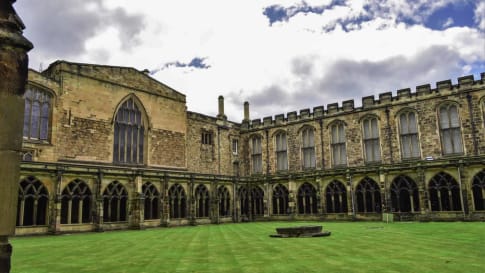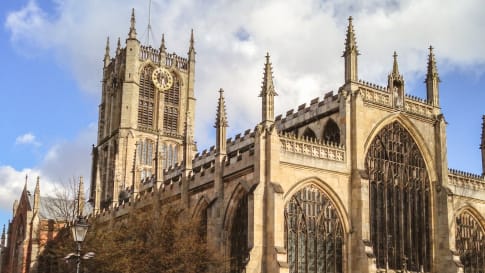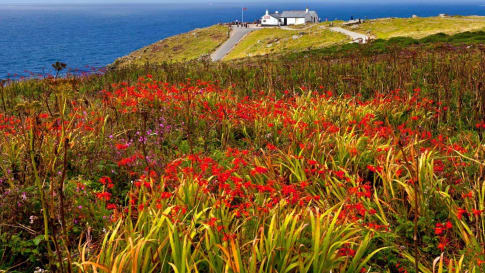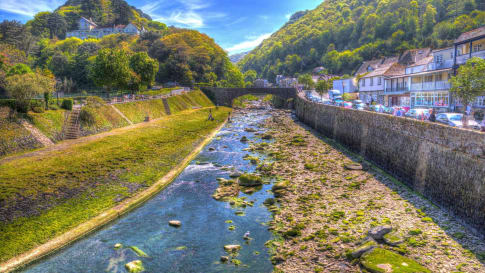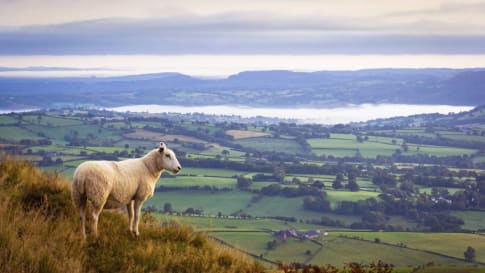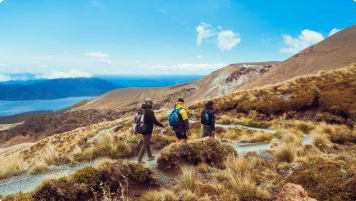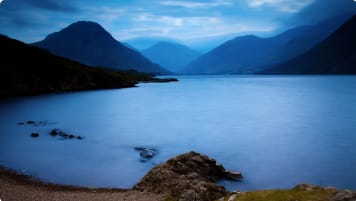Rural Britain | Walking Small Group Tour
A walking tour into England, Scotland and Wales provides small group journeys with breathtaking scenery to destinations such as Snowdonia national park , the UNESCO world heritage site Hadrians wall and the lake district. each day tour provides authentic experiences often off the beaten path from our local guides.
From A$15,880AUD
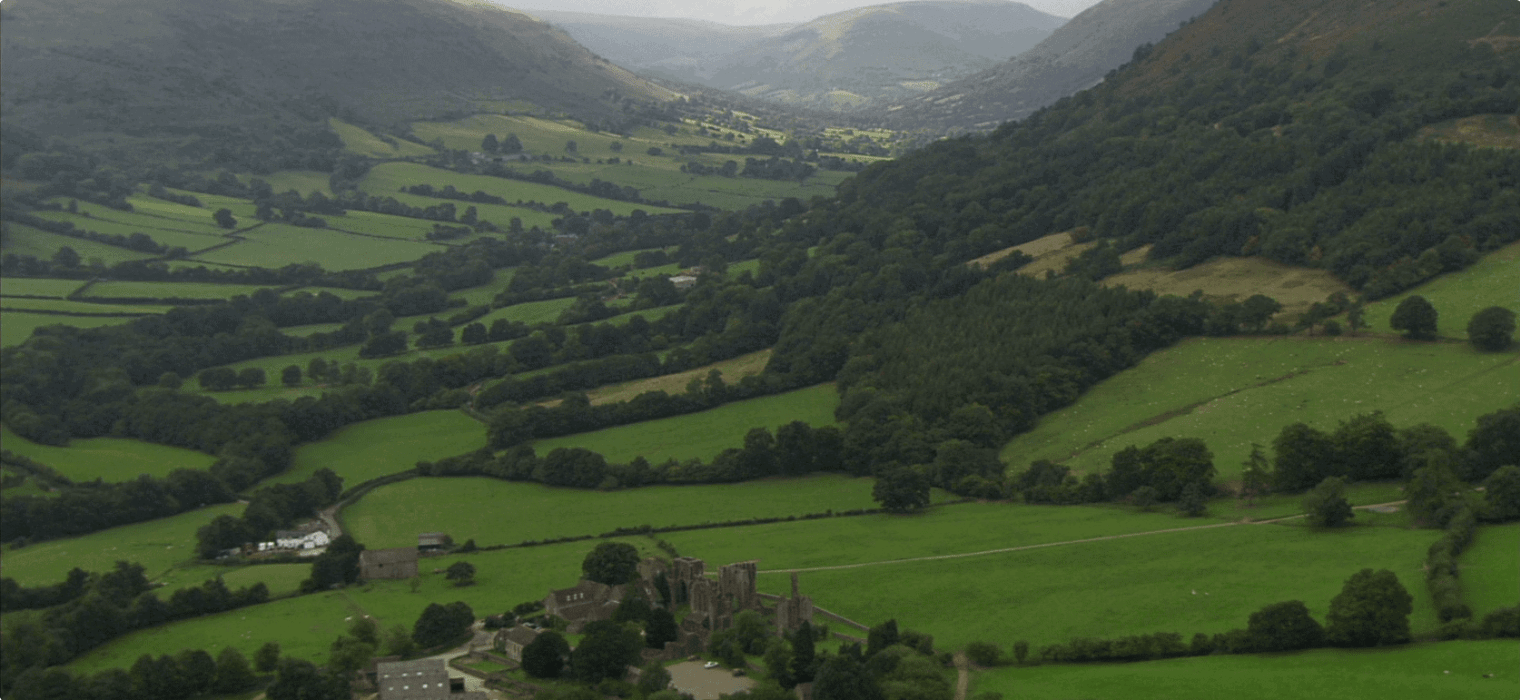
Highlights
- 1. Visit Isle of Arran with its immense diversity of land forms and human history.
- 2. Enjoy the diverse landscapes of South Wales with views from the Brecon Beacons to the Monmouthshire-Brecon Canal.
- 3. Follow some of the great walking tracks of Britain, including Hadrian’s Wall, the South West Coast Path, and the South Downs Way.
- 4. Take walks with ecclesiastical endings, one at the ruins of Whitby Abbey, the other at the ancient but living Canterbury Cathedral.
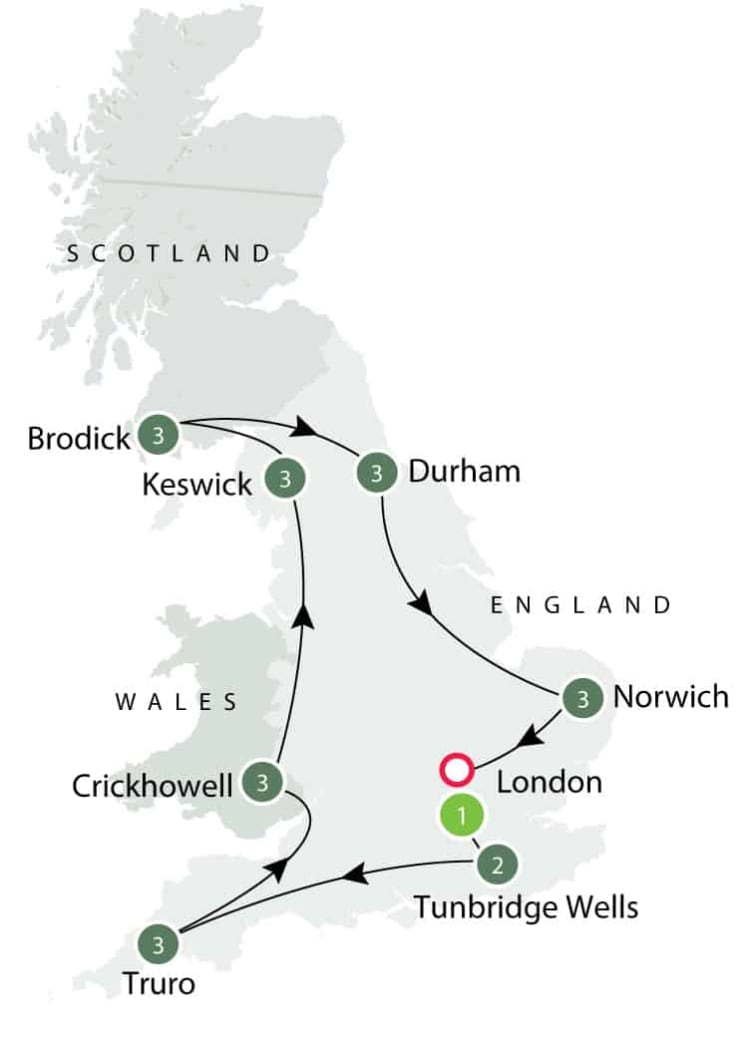
Departure Dates
| Departure Date | Price |
|---|---|
| 08 June 2024 Ends 29 June 2024 • 22 days A$15,880 Twin A$18,765 Single Available | Selected |
| 01 September 2024 Ends 22 September 2024 • 22 days A$15,880 Twin A$18,765 Single Available | |
| 07 June 2025 Ends 28 June 2025 • 22 days A$16,675 Twin A$19,695 Single Available | |
| 07 September 2025 Ends 28 September 2025 • 22 days A$16,675 Twin A$19,695 Single Available | |
| 06 June 2026 Ends 27 June 2026 • days A$16,675 Twin A$19,695 Single Available | |
| 13 September 2026 Ends 04 October 2026 • days A$16,675 Twin A$19,695 Single Available |
Rural Britain Walking Tour
Odyssey offers easy, convenient, and relaxed escorted small group walking tours across Britain and across Europe. We explore Britain's fairy-tale natural beauty, its ancient Roman, and Imperial heritage, its World Heritage Sites, all with some truly spectacular scenery along the way. This and more is all waiting to be explored on one of Odyssey’s small group walking tours of Britain, designed for the senior traveller, and led by experienced, and enthusiastic like minded people.
Odyssey's walking tour of rural Britain is designed to introduce groups of like-minded people to the incredible variety of walks across Britain, taking you through some of the most stunning scenery in England, Wales, and Scotland.
Rural Britain Walking Tour Itinerary
On this 22 day fully escorted small group program we enjoy walks in Kent, Cornwall and on the Welsh/English borders. You also spend four days in the Lake District and then head up to the Scottish border. In Scotland, we have included a walking day tour on the Isle of Arran. During your time on this stunning island you can take in the dramatic, mountainous landscape and enjoy discovering the history of the Machrie Moor Standing Stones, a rich archaeological site that dates from between 3500 and 1500 B.C. From Arran, the walking tour moves to the east coast towards Durham and then continues south back across the border for walks around Norfolk from our base in Norwich.
During this tour the routine is two nights in the one hotel, allowing for two days of walking in each location. This is followed by a day travelling to the next location. Odyssey makes your "travel days" interesting by stopping at cultural and historic sites along the way to our next destination. Experienced professional guides lead most of the walks and these tour operators will allow you to learn about the local landscapes and regional history as you walk.
On this tour the walks chosen for you are in national parks or places designated as areas of outstanding beauty. Included in this list are Arran, in Scotland, the Brecon-Monmouth Canal in Wales and a section of Hadrian's Wall in Northumberland. This small group walking tour will introduce you to some of the best scenery that Britain has to offer. A moderate level of fitness is required as each walk takes around 3-4 hours. Occasionally, as with Pen y Fan, the highest peak in south Wales and the Loughrigg Terrace in the Lakes District, the walks can be slightly more physically demanding. However, keep in mind that the Odyssey Tour Leader is there to ensure the activities are both manageable and enjoyable for participants.
There are several highlights along the tour with the opportunity to explore some of the most iconic and historic British sites. Some of the many natural wonders you will get to witness include the striking White Cliffs of Dover, the Brecon Beacons, and the Monmouthshire Brecon Canal. You will also explore one of the oldest and most significant Christian structures in England, the Canterbury Cathedral, and visit the Whitby Abbey in Yorkshire, the Romantic ruins of which inspired Bram Stoker to write his classic Gothic novel, Dracula.
Some of the regions which our walks pass through include:
Kent:
Known as the 'Garden of England', Kent is the iconic southern England of rolling hills and quaint villages. Home to some of England's most fertile agricultural land, the county is known for producing fruits (particularly apples and cherries), vegetables, hops, barley, wheat, and potatoes. In the southeastern corner of England, Kent has seen first contact with many continental invaders, including the Celts and the Romans. In the Middle Ages, the stunning Canterbury Cathedral was a draw for pilgrims from around England, described in Geoffrey Chaucer's The Canterbury Tales. Kent is also home to the beautiful White Cliffs of Dover, a white chalk formation within the North Downs, an area of grassy land ideal for cattle and sheep farming.
Cornwall:
A remote peninsula in south-west England, the county of Cornwall (Cornish: Kernow) is a land unto itself. With a vibrant Celtic culture with close ties to Wales, Scotland, and Brittany, Cornwall is also home to some of England's most stunning scenery, sandy beaches and rugged cliff faces. Our walks in Cornwall take you to Bodmin Moor, associated with the legends of King Arthur and Daphne Du Maurier's Jamaica Inn, and along the Southwest Coastal Track, which traces the Atlantic ocean. We also visit a UNESCO World Heritage listed tin and copper mine.
Lake District:
In the county of Cumbria, Northwest England, the Lake District's beautiful scenery of mountains and lakes has long inspired England's poets and writers, from William Wordsworth to John Ruskin. On our tour through the Lake District, we visit Wordsworth's home Dove Cottage and the Castlerigg Stone Circle, in addition to our walks through the rugged landscape of the area.
For more information on the Lake District, take a look at our articles: Highlights of the Lake District, The Lake District Poets: Romanticism and Inspiration, and Discover England's Lake District.
North York Moors:
Immortalised by Emily Bronte's Wuthering Heights, the Yorkshire Moors are among Britain's most atmospheric landscapes: a high and rugged plateau of rocky land, covered in the late summer with purple heather. On our trip to the moors, we walk the coastal Cleveland Way, a modern walking trail that follows old driving routes between Scotland and London. Captain James Cook, the first European to chart Australia's east coast, grew up in the area and is commemorated at the Cook Monument. We also visit the eerie ruins of Whitby Abbey, which have inspired writers from Caedmon, the first English poet, to Bram Stoker.
For more information on the history of Yorkshire, we urge you to read our article: Yorkshire History, 17th-19th centuries.
Northumberland:
The county of Northumberland, right on the border with Scotland, is one of England's last great wildernesses. In the Middle Ages, Northumberland was a deserted no-mans land between England and Scotland protected by the militaristic and powerful Percy family. Today, Northumberland remains England's least populated county, home to the wilds of Northumberland National Park. Here we visit some of the best preserved parts of Hadrian's Wall, which guarded Roman civilisation from the Picts. We also head to Durham Castle, one of England's finest Norman buildings, now part of the University of Durham.
Isle of Arran:
One of Scotland's most beautiful islands, Arran is often referred to as 'Scotland in miniature', because all of the mainland's geographic features are represented on the island. On the Isle of Arran, we visit neolithic standing stones on Machrie Moor, and the Civil War ruins of Lochranza Castle. We also enjoy a guided tour and tasting at a whisky distillery.
For more information on the Isle of Arran, take a look at our articles on the Islands of Scotland and Scottish whiskey.
Norfolk:
They say that locals here have 'one foot on the land and one in the sea', and it's easy to see why: this low-lying land was only transformed from wetland to agricultural land in the 17th century, thanks to the Dutch engineer Cornelius Vermuyden. On our tour we take a cruise through the Norfolk Broads, a warren of wide shallow lakes interconnected by rivers, and walk the nearby wetland coast, home to Britain's largest reserve for rare bird species. Norfolk also has a long and interesting history: its proximity to Europe means that the county has seen successive waves of invasion: Romans, Saxons and Angles, and Vikings. The region's history can be explored in the county capital, Norwich, which is home to one of medieval England's great cathedrals.
The Walking Rural Britain tour has been offered for a number of years to the active mature walker. The total number of participants in this tour will be 12 or fewer with the addition of an Odyssey program leader. Odyssey Traveller also offers a range of walking tours each year paced for senior travellers. The collection of walks are for active mature and senior travellers, particularly those who seek a holiday off the main circuit.
If you would like to learn more about Britain, England, Wales or Scotland, visit our profiles where all the other tour departures are listed as well. For more details about this tour, click the ‘Top 5’ or ‘Itinerary’ buttons above! If you’re keen to experience this tour, please call or send an email. Or, to book, simply fill in the form on the right hand side of this page.
Articles published by Odyssey Traveller for Walking and Hiking tours for seniors
To help you prepare for any Odyssey walking program or just to maintain general fitness:
- articles on Selecting walking shoes for women
- article on footwear and walking shoes
- article on what to pack when travelling
- article on maintaining muscle fitness in senior and mature age travellers
- article on selecting socks for walking
- article detailing six great short walks in Britain
- article on preparing for a walking holiday
- article on Pilgrim walks in Europe
- article on walking in the Lake District
Articles about Great Britain published by Odyssey Traveller
The following list of articles are either published by Odyssey Traveller or are carefully selected external source to maximise senior travellers' knowledge and enjoyment of Britain when visiting:
- A Traveller's Guide to Medieval Chester
- Roman Roads in Britain
- Understanding British Churches
- Medieval British life
- Icons of British Villages
- Studying Gargoyles and Grotesques
- New Discoveries About Britain's Stone Circles
- Victorian Country Life
- Britain's Neolithic past
- Lumps and Bumps, How to Read the British Landscape
- The Lake District Poets
- English Village History
- Britain's National Trust
- National trust; Britain's best walks with Julia Bradbury
- National Parks of Britain
- Ten books about Walking in Britain from the Guardian
- UNESCO World Heritage sites of Britain
Gallery
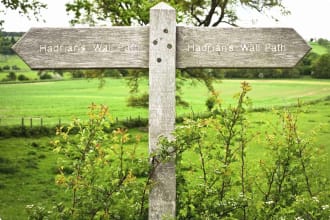
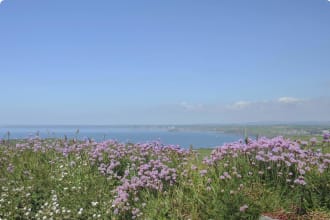
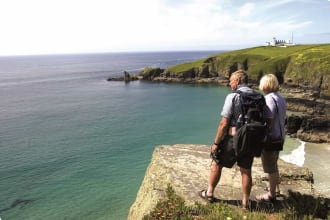
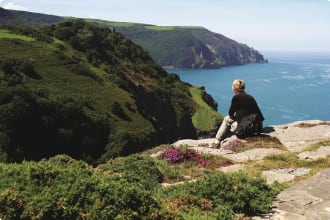
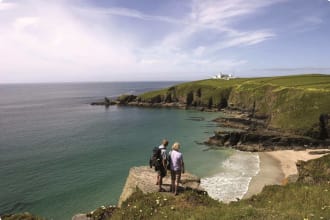
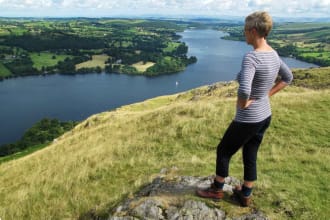
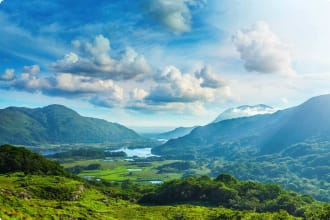
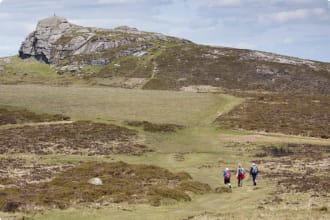
Itinerary
22 days
Day 1: London
Accommodation: London Lodge Hotel or similar.
Upon arrival at our hotel in London the tour leader will welcome you with an introductory meeting, followed by dinner at a local restaurant.
Day 2: Tunbridge Wells
Accommodation: Royal Tunbridge Wells Hotel or similar.
Today we travel to Kent. Historically England had many of its contacts with the Continent from this southeastern part of the country adjacent to the English Channel, including landings by Celtic tribesmen and the Romans. This coastline was also a favoured territory for smugglers and was extremely significant in both World War I and II.
We will start our first walk on a section of the North Downs Way between Chilham and Canterbury city. The North Downs Way is a footpath 200 kilometres long that runs south of London between Farnham and Dover, passing through woods and agricultural lands. One of its branches is through the city of Canterbury and parts of this route correspond with the Pilgrims Way. Chalk ridges run through much of the land with spectacular exposure at coastal Dover and The Seven Sisters.
The name Downs refers to the rolling grassy hills in this part of England allowing cattle and sheep farming. Hop gardens used to be popular, producing an ingredient for beer making, and while this culture has now disappeared the oast houses, used to dry hops, may still be found in Kent.
We will have time at the end for a short cathedral visit. Later we will spend some time visiting the coast near Dover before checking into our hotel in time for a group dinner.
*North Downs Way from Chilham to Chartham Hatch 8 kms (approx. 2 hrs)
Day 3: Tunbridge Wells
Accommodation: Royal Tunbridge Wells Hotel or similar.
We will make our way along South Downs Way, starting at Firle Beacon in Sussex. This walk takes us from high viewing points through grazing lands until we drop down into the village of Alfriston in Cuckmere valley. The South Downs Way was an ancient pathway used since the Stone Age days by the very earliest of shepherds. Covering a length of about 150 kilometres, the Way ends at Beachy Head, a well visited part of the Seven Sisters cliffs.
After lunch we visit the coast and the cliffs with a walk on a section between Beachy Head and East Dean via Birling Gap. The evening is free to pursue our own interests.
*South Downs Way to Alfriston 8 kms (approx. 2.30 hrs)
*East Dean to Beachy Head via Birling Gap 5 kms (approx. 2 hrs)
Day 4: Saint Austell
Accommodation: Carlyon Bay Hotel or similar.
Our first stop today is Stonehenge, where we spend the morning (entrance included). Devon and Cornwall form the tip of southwest England, and have a mixed coastline with sandy beaches and rugged, dramatic cliff scenery. Many beautiful little villages are located along the dented coastline, and several of these serve as the home port for fishermen like the picturesque Polperro or, as at Fowey, a mixed port town with some commercial vessels loaded with china clay.
We then drive to Bodmin, where we have approximately 2 hours for a walk on Bodmin Moor. Tin mining was an important industry in the past and much of this is conserved in a number of World Heritage Sites. Today the region is a popular holiday destination with major centres like Lands End and Newquay. In the inland sections both counties have moor-lands, Bodmin Moor in Cornwall and the larger Dartmoor in Dorset. These are uplands, often rocky with few trees, and they are used for grazing and recreation. Like Tintagel Castle, Bodmin Moor has associations with the legends of King Arthur and was also the setting for Jamaica Inn by Daphne du Maurier (1907-1989).
We drive to St Austell for dinner at our Hotel.
Day 5: Saint Austell
Accommodation: Carlyon Bay Hotel or similar.
In the morning we drive to St Juliot, where our first walk is from the lovely little church of St. Juliot, restored by Thomas Hardy to the harbour town of Boscastle, then along the Atlantic bordered Southwest Coastal Track .
After this walk we will have some shorter walks as we drive toward Lands End via St. Ives and Botallack Mine, a 19th century tin and copper mine. This is located within a coastal World Heritage Site as part of a significant mining landscape across West Devon and Cornwall.
*St Julio to Boscastle along Southwest Coastal Walk 3 kms (approx. 1 hr)
*Rocky Valley to Tintagel along coastal path 5 kms (approx. 1.45 hrs)
*Fowey to wards Polperro along Corninc Coastal path 5 kms (approx. 1.45 hrs)
Day 6: Saint Austell
Accommodation: Carlyon Bay Hotel or similar.
After breakfast, we enjoy a walk from Wheal Martyn to St Austell, and then take a guided tour of St Austell. The rest of the day is at leisure.
Day 7: Crickhowell
Accommodation: Kings Arms Hotel or similar.
After breakfast, we drive to Ilsington, Dartmoor, where we take a circular walk with a guide. Ilsington is a village and civil parish situated on the eastern edge of Dartmoor.
We end the day with a drive to Crickhowell where we check in and have dinner at our hotel.
*Circular walk Islington 6 kms (approx. 2.30 hrs)
Day 8: Crickhowell
Accommodation: Kings Arms Hotel or similar.
In the morning we drive to Storey Arms, where we walk to Pen Y Fan summit. This route is probably the most popular walk in the Brecon Beacons it’s easy access making it an obvious choice for visitors to the area. A short but enjoyable route, it visits three summits, the first of which is Pen-y-Fan, the highest mountain in the range, and the highest mountain in southern Britain. The panorama from the summit, as would be expected, is as extensive as it is beautiful. On especially clear days. it is even possible to pick out the Somerset Hills and the coast of Devon. The summit carries an ancient burial cairn surmounted by a trig pillar.
For lunch, we drive to Libanus, where we also have time for a visit at the visitor centre.
We then drive back to Crickhowell, and the rest of your day is at leisure.
*Return walk from Storey Arms to Pen Y Fan summit 8 kms (approx. 2.30 hrs)
Day 9: Crickhowell
Accommodation: Kings Arms Hotel or similar.
Walking today is confined to the lower lands and the towpath of the Monmouthshire and Brecon Canal, and features the section between the 3 locks at Llangynidr and Talybont. The River Usk passes through Brecon township and follows a valley southeast to enter the Severn estuary at Newport. The Monmouthshire and Brecon Canal was built between 1792 and 1812 and its upper sections parallel the Usk, but today the canal does not reach the sea. The river and canal follow a beautiful valley and since its restoration was completed in 1970, it has served as an attraction for walking and boating enthusiasts.
Our next local activity will be a drive to Llanddeusant in the least developed eastern part of the Brecon Beacon National Park to the Red Kite Feeding Station for feeding time (by 14:45 pm). This species was endangered some 20 years ago and this station has contributed to an increased and much more stable population of these magnificent birds with a wingspan approaching 2 metres.
*Llangynidr to Talybont 8 kms (approx. 2.15 hrs)
Day 10: Keswick
Accommodation: Skiddaw Hotel or similar.
From Wales we travel north via Chester and the outskirts of Manchester to Keswick, in the Lake District, where we will stop for 3 nights.
Many of the local landforms that make up this northwestern part of England are naturally attractive hills (fells) and valleys, and were fashioned through past glacial activity which gouged out and blocked valleys, so forming lakes. The geological diversity of the region adds a major dimension to the Lakeland landscapes. The Lake District National Park covers most of the Lakeland and it is the second largest National Park in Britain. This diversity has been exploited by climbers, hikers, and walkers, resulting in an endless number of walks in the district with everything from gentle lakeside paths to mountain climbing.
Day 11: Keswick
Accommodation: Skiddaw Hotel or similar.
This morning we drive to Grasmere, where we join a public tour of Dove Cottage. Dove Cottage is a house on the edge of Grasmere in the Lake District of England. It is best known as the home of the poet William Wordsworth and his sister Dorothy Wordsworth.
After lunch, we walk Rydal Water to Ambleside via Loughrigg Terrace, with a local guide. We will have some free time in Ambleside before driving back to Keswick.
*Rydal Water to Ambleside via Loughrigg Terrace 9 kms (approx. 3 hrs)
Day 12: Keswick
Accommodation: Skiddaw Hotel or similar.
Today we have our longest walk (optional and adjustable). We start in Keswick and walk to Castlerigg, via Watendlath and Walla Crag. Watendlath Tarn sits in a wonderfully wild location at the head of a classic hanging valley on the eastern side of Borrowdale. The combination of the small hamlet of Watendlath, its handful of fields and the wild fells that surround it, give this tarn a truly lovely feel.
At the destination, we visit the Castlerigg Stone Circle. One of around 1,300 stone circles in the British Isles and Brittany, it was constructed as a part of a megalithic tradition that lasted from 3,300 to 900 BC, during the Late Neolithic and Early Bronze Ages.
We return to Keswick and have the rest of the afternoon/evening free.
*Keswick to Castlerigg via Watendalath and Walla Crag 20 kms
Day 13: Brodick
Accommodation: Auchrannie Resort or similar.
Our travel today is via Carlisle, where we stop and then across the Scottish Border and on to Ardrossan in Ayrshire to catch a ferry to Arran. Arran is one of the Clyde islands located between the mouth of the River Clyde and Kintyre. Because of its diversity of rock forms and land forms, Arran is a described as miniature Scotland where all the outstanding geological features of the mainland are represented on this small island. We will be accommodated in Brodick, the main centre on the island, for 3 nights.
Day 14: Brodick
Accommodation: Auchrannie Resort or similar.
We begin the day with a drive from Whiting Bay to Lochranza, where we visit the Isle of Arran Distillery, and participate in a guided tour. We also visit the Lochranza Castle ruins.
We then travel to Brodick where we visit the Arran Heritage Museum and grounds.
Day 15: Brodick
Accommodation: Auchrannie Resort or similar.
We begin the day with a drive to Coire Fhionn Lochan, where we take a walk and view the beautiful glacial features of the Corrie area. In the afternoon, we drive to Blackwaterfoot, where we walk into the standing stones on Machrie Moor, followed by a walk via Kings Cave to Blackwaterfoot.
We return to our hotel in the evening.
*Machrie Moor and King’s Cave 9 kms (approx. 3 hrs)
Day 16: Beamish Hall
Accommodation: Marriott Hotel or similar.
The morning of our travel day to Durham will be spent driving to Brodick then returning by ferry to Ardrossan. We then drive down the coast to Kircudbright, in Scotland’s pastoral corner. We then travel across the Pennines to Beamish Hall. The Pennines is a north-south chain of high country in northern England between the Peak District and the Scottish border. This country is the source of many rivers and is formed mainly of limestone overlain by sandstone and shale. In some places this high country has been intruded by volcanic dolerite, and it is this relatively hard rock that forms the waterfalls. We stay in Beamish Hall for 3 nights.
Day 17: Beamish Hall
Accommodation: Marriott Hotel or similar.
After breakfast at the hotel, we drive from Beamish to Durham. On arrival, we take a short walk in the precincts of Durham city and up to the Castle and Cathedral. Both the Cathedral and Castle (now part of the university) were inscribed on the World Heritage List in 1986.
We then visit Housesteads Fort. The fort at Housesteads is a larger establishment with clear outlines of the bath house, stores, and barrack buildings. Here, there is a section of Hadrian’s wall that coincides with the Pennine Way. Hadrian’s Wall was built by the Romans and runs east to west across northern England. Like Offas Dyke, it was aimed at containing the tribes, in this case to the north. Today the Wall is listed as a World Heritage Site with many parts of the Wall and the mile-forts along it remaining intact.
We then return to Beamish Hall where we spend the night.
*Durham city walk 2 kms (approx. 0.30 hrs)
Day 18: Beamish Hall
Accommodation: Marriott Hotel or similar.
We begin the day with a drive to Great Ayton, from here, we walk to the Cook Monument along Cleveland Way to see the statue of James Cook. The Cleveland Way is a modern day walking path and follows the old driving routes between Scotland and London.
The town of Greater Ayton is on the moors and is a historically significant town given that as a boy Captain James Cook spent much of his time here. Later James Cook was an apprentice in Whitby before making his first sea voyage in the merchant navy. Interestingly the ship he was to later make his great sea journeys in, the Earl of Pembroke, re-named the Endeavour, had been built as a collier sailing out of Whitby.
Later we will be dropped off on the coastal section of the Cleveland Way for a walk north between Robin Hood’s Bay and Whitby, via the Abbey ruins. There will be free time in Whitby to visit the Captain Cook Memorial Museum. Whitby was also home to a great Benedictine Abbey located on the cliffs south and east of the town. The ruins of the abbey are under the care of English Heritage. A most significant part of ecclesiastical history was that the timing for Easter was resolved here at the Synod of Whitby in 664.
In the evening, we return to Beamish Hall.
*Great Ayton to Cook monument along Cleveland Way 5 kms (approx. 1.30 hrs)
*Robin Hood’s Bay to Whitby along coastal path 11 kms (approx. 3 hrs)
Day 19: Norwich
Accommodation: Maid's Head Hotel or similar.
Travel today is to Norwich, Norfolk, East Anglia with a lunchtime stop in Lincoln. In Lyddington, we stop to view Bede House. We also stop in Oakham and Lyddington, before arriving in Norwich. On arrival, we check in and enjoy dinner at our Hotel. We stay at Norwich for 3 nights.
Day 20: Norwich
Accommodation: Maid's Head Hotel or similar.
In East Anglia our tour will be focused on Norfolk, a relatively flat, poorly-drained county. The early transformation of these wetlands to productive agricultural land was the work of the Dutch engineer Cornelius Vermuyden, commissioned to construct drainage works. The Broads are significant local landforms restricted to eastern England, and consist of wide shallow lakes interconnected by rivers.
Many nationalities have had an interest in the coastline of Norfolk, starting with invasions by the Romans, then the Saxons and Angles, followed by the Vikings. Later groups came not as invaders but as Icelandic fishermen who settled and fished the rich local waters.
After breakfast, we drive from Norwich to Halvergate. From there, we walk across Berney Arms to Great Yarmouth.
Other local activities will include visiting the Herringfleet smock mill, and 3rd century Roman remains at Burgh fort/castle.
*From Halvergate across Berney Arms to great Yarmouth 14 kms (approx. 2.5 hrs)
Day 21: Norwich
Accommodation: Maid's Head Hotel or similar.
After breakfast, we drive to Wells-next-to-the-sea have a morning walk on the Norfolk Coast Path between Wells-next-the Sea and Blakeney. This is a flat walk with a mixture of agricultural and grazing lands, reed beds, tidal flats, and many species of birds. The coastal wetlands form Britain’s largest nationally protected reserves for many rare and protected bird species. Many sections of the northern coastline are undergoing sea erosion, requiring the building of palisades and walls to protect the land during stormy conditions and very high tides.
In the afternoon there will be a cruise on the Broads from Wroxham. On return to Norwich there will be free time and we finish the day with a final tour dinner.
*Wells-next-the-sea to Blakeney via Norfolk coastal path 13 kms (approx. 3.30 hrs)
Day 22: Norwich
Today we enjoy a short (one hour) guided city walk in Norwich that takes in Elm Hill, parts of the old wall, and the Cathedral precinct. After an early lunch, we travel to Heathrow where we say our farewells and the tour draws to a close. Our approximate arrival time into Heathrow is 16:30.
Tour Notes
- Group size is limited to a maximum of 12 participants.
Includes / Excludes
What’s included in our Tour
- 21 nights of accommodation in England, Wales, and Scotland.
- 21 breakfasts and 10 dinners.
- Touring by comfortable and modern mini-coach.
- All entry fees and services of local guides.
- Services of Tour Leader for the duration of tour.
- Detailed preparatory information.
What’s not included in our Tour
- Comprehensive travel insurance.
- Return economy class international airfare and departure taxes.
- Airport transfers.
- Items of a personal nature, such as telephone calls and laundry.
Participants must be in excellent health, extremely mobile and live an active lifestyle. Program activities may include up to 6 hours of continuous strenuous, moderate-to-fast paced activities per day on varied terrain.
Book now
Make it a private tour
Easing your journey
Crossing international borders with restrictions
The list of requirements to travel internationally has changed and will continue to change for several years. Odyssey is here to assist you in managing your way through these requirements:
For more information see our Crossing international borders with restrictions page.
Book With Confidence
If less than 30 days before your tour starts you are unable to travel as a result of Government travel restrictions, Odyssey Traveller will assist you with a date change, provide you with a credit or process a refund for your booking less any non-recoverable costs.
See Terms and conditions for details.
Peace of Mind Travel
The safety of our travellers, tour leader, local guide and support staff has always been our top priority and with the new guidelines for public health and safety for keeping safe for destinations around the world, we’ve developed our plan to give you peace of mind when travelling with us.
See Peace of Mind Travel for details.
Reviews
An excellent experience of walking in various parts of Britain with many different geographical features and man-made environments. Travel days between locations include visits to historic sites. A great way to see the countryside of the UK and get a general overview of many counties. The tour requires fitness and energy for a change of scene every day.
Christine J. June 2018
Overall the trip was great and met my expectation.
Errol H. June 2017
We found all the guides in each place excellent, some more than others, but always knowledgeable and obviously in love with their chosen careers. David our coach driver was excellent also, coping with some difficult situations with a cool head and providing us with a running commentary on a country he knows so well - especially Norfolk his home county!
Sally and Angus H. June 2017
Reading List Download PDF
The Making of the British Landscape: How We Have Transformed the Land, from Prehistory to Today
Francis Pryor
This is the changing story of Britain as it has been preserved in our fields, roads, buildings, towns and villages, mountains, forests and islands. From our suburban streets that still trace out the boundaries of long vanished farms to the Norfolk Broads, formed when medieval peat pits flooded, from the ceremonial landscapes of Stonehenge to the spread of the railways - evidence of how man's effect on Britain is everywhere. In The Making of the British Landscape, eminent historian, archaeologist and farmer, Francis Pryor explains how to read these clues to understand the fascinating history of our land and of how people have lived on it throughout time. Covering both the urban and rural and packed with pictures, maps and drawings showing everything from how we can still pick out Bronze Age fields on Bodmin Moor to how the Industrial Revolution really changed our landscape, this book makes us look afresh at our surroundings and really see them for the first time.
Wild Kingdom: Bringing Back Britain's Wildlife
Stephen Moss
Can Britain make room for wildlife? Stephen Moss believes it can.
The newspaper headlines tell us that Britain’s wildlife is in trouble. Wild creatures that have lived here for thousands of years are disappearing, because of pollution and persecution, competition with alien species, changing farming and forestry practices, and climate change. It’s not just rare creatures such as the Scottish wildcat or the red squirrel that are vanishing. Hares and hedgehogs, skylarks and water voles, even the humble house sparrow, are in freefall.
But there is also good news. In Newcastle, otters have returned to the river Tyne and red kites are flying over the Metro centre; in Devon, there are beavers on the River Otter; and peregrines – the fastest living creature on the planet – have taken up residence in the heart of London.
Elsewhere in the British countryside things are changing too. What were once nature-free zones are being ‘rewilded’; giving our wild creatures the space they need – not just to survive, but also to thrive.
Stephen Moss has travelled the length and breadth of the UK, from the remote archipelago of St Kilda to our inner cities, to witness at first hand how our wild creatures are faring, and offers us this complex, heartfelt and often unexpected response.
A Natural History of the Hedgerow: and ditches, dykes and dry stone walls
John Wright
It is difficult to think of a more quintessential symbol of the British countryside than the British Hedgerow, bursting with blackberries, hazelnuts and sloes, and home to oak and ash, field mice and butterflies. But as much as we might dream about foraging for mushrooms or collecting wayside nettles for soup, most of us are unaware of quite how profoundly hedgerows have shaped the history of our landscape and our species.
One of Britain's best known naturalists, John Wright introduces us to the natural and cultural history of hedges (as well as ditches, dykes and dry stone walls) - from the arrival of the first settlers in the British Isles to the modern day, when we have finally begun to recognise the importance of these unique ecosystems. His intimate knowledge of the countryside and its inhabitants brings this guide to life, whether discussing the skills and craft of hedge maintenance or the rich variety of animals who call them home.
Informative, practical, entertaining and richly illustrated in colour throughout, A Natural History of the Hedgerow is a book to stuff into your pocket for country walks in every season, or to savour in winter before a roaring fire.
The Wild Rover: A Blistering Journey Along Britain's Footpaths
Mike Parker
Mike Parker, bestselling author of Map Addict, offers a very full, intelligent and witty exploration into a glorious and passionate British subject - footpaths and the history of land ownership.
Mike discovers how these paths have become part of our cultural landscape and why, at the tender age of 44, he suddenly finds himself at a crossroads.
Provocative, funny and personal, this book celebrates Britain’s unique and extraordinary network of footpaths. It examines their chequered and surprisingly turbulent history, from the Enclosures Acts of the eighteenth century to the 1932 Mass Trespass on Kinder Scout in Derbyshire; and from the hard-won post-war establishment of great National Trails like the Pennine Way to the dramatic latter-day battles by the likes of Nicholas van Hoogstraten and Madonna to keep ramblers off their land.
The story ranges far and wide, to all corners of the country and beyond, and is filled with the many characters that Mike engages with along the way - the poets and artists, farmers and ramblers, landowners and Rights of Way officers and campaigners, historians, archivists and anyone else who crosses his path (or even tries to block it).
The Ancient Paths: Discovering the Lost Map of Celtic Europe
Graham Robb
Graham Robb's new book will change the way you see European civilization.
Inspired by a chance discovery, Robb became fascinated with the world of the Celts: their gods, their art, and, most of all, their sophisticated knowledge of science. His investigations gradually revealed something extaordinary: a lost map, of an empire constructed with precision and beauty across vast tracts of Europe. The map had been forgotten for almost two millennia and its implications were astonishing.
Minutely researched and rich in revelations, The Ancient Paths brings to life centuries of our distant history and reinterprets pre-Roman Europe. Told with all of Robb's grace and verve, it is a dazzling, unforgettable book.
The Making Of The British Landscape: From the Ice Age to the Present
Nicholas Crane
The British landscape has been continuously occupied by humans for 12,000 years, from the end of the Ice Age till the twenty-first century. It has been transformed from a European peninsula of glacier and tundra to an island of glittering cities and exquisite countryside.
In this geographical journey through time, we discover the ancient relationship between people and place and the deep-rooted tensions between town and countryside.
The twin drivers of landscape change - climate and population - have arguably wielded as much influence on our habitat as monarchs and politics. From tsunamis and farming to Roman debacles and industrial cataclysms, from henge to high-rise and hamlet to metropolis, this is a book about change and adaptation. As Britain lurches from an exploitative past towards a more sustainable future, this is the story of our age.
Tiny Churches
Dixe Wills
While travelling all over Britain on his pushbike, non-flying travel writer Dixe Wills is forever popping into old churches to look around, grab a moment of tranquility or just to shelter from the elements. Extending his love of all things tiny into yet another area, this book is his guide to 60 of the loveliest and most diminutive churches that Britain has to offer, many of which are known only to locals or tourists who are simply lucky enough to stumble across them. Representing a unique slice of British local history and attitudes, tiny churches are the great survivors of the world. Unlike grand cathedrals, they were built to serve more humble ends, but they withstood centuries of religious unrest (and the Victorian 'church improvers') to survive into this most irreligious of centuries. Today, scattered all over Britain, these atmospheric places retain the essence of what they were when the stonemasons, labourers, smiths, carpenters and glaziers were corralled together to build them.
Bread for all
Chris Renwick
Today, everybody seems to agree that something has gone badly wrong with the British welfare state. In the midst of economic crisis, politicians and commentators talk about benefits as a lifestyle choice, and of 'skivers' living off hard-working 'strivers' as they debate what a welfare state fit for the twenty-first century might look like.
This major new history tells the story of one the greatest transformations in British intellectual, social and political life: the creation of the welfare state, from the Victorian workhouse, where you had to be destitute to receive help, to a moment just after the Second World War, when government embraced responsibilities for people's housing, education, health and family life, a commitment that was unimaginable just a century earlier. Though these changes were driven by developments in different and sometimes unexpected currents in British life, they were linked by one over-arching idea: that through rational and purposeful intervention, government can remake society. It was an idea that, during the early twentieth century, came to inspire people across the political spectrum.
In exploring this extraordinary transformation, Bread for All explores and challenges our assumptions about what the welfare state was originally for, and the kinds of people who were involved in creating it. In doing so, it asks what the idea continues to mean for us today.
The English Village: History and Traditions
Martin Wainright
The village remains a quintessential and much-loved treasure of the English countryside. This rural idyll has inspired generations of great poets, novelists and artists including the likes of Constable, Hardy, Wordsworth, as well as providing the picturesque setting for modern TV series such as "Lark Rise to Candleford and Cranford". "The English Village" celebrates all that is unique and loved about a typical village - the pub, the green, the school, the church, the pond, the local shop and more - as well as exploring how the village has changed over the centuries. Also includes fascinating information on the origins of village names - Siddington, for example, means the farm of the valley (sidd: valley, in: belonging to, ton: farmland). Filled with facts, figures, customs and lore, there is a wealth of fascinating information to be discovered in this charming book.
Return To Akenfield: Portrait Of An English Village In The 21st Century
Craig Taylor
Ronald Blythe's 1969 book Akenfield - a moving portrait of English country life told in the voices of the farmers and villagers themselves - is a modern classic. In 2004, writer and reporter Craig Taylor returned to the village in Suffolk on which Akenfield was based. Over the course of several months, he sought out locals who had appeared in the original book to see how their lives had changed, he met newcomers to discuss their own views, and he interviewed Ronald Blythe himself, now in his eighties. Young farmers, retired orchardmen and Eastern European migrant workers talk about the nature of farming in an age of computerization and encroaching supermarkets; commuters, weekenders and retirees discuss the realities behind the rural idyll; and the local priest, teacher and more describe the daily pleasures and tribulations of village life. Together, they offer a panoramic and revealing portrait of rural English society at a time of great change.
Life in a Medieval Castle
Joseph Gies & Frances Gies
From acclaimed historians Frances and Joseph Gies comes the reissue of this definitive classic on medieval castles, which was a source for George R.R. Martin’s Game of Thrones series.
“Castles are crumbly and romantic. They still hint at an age more colorful and gallant than our own, but are often debunked by boring people who like to run on about drafts and grumble that the latrines did not work. Joseph and Frances Gies offer a book that helps set the record straight—and keeps the romance too.”—Time
A widely respected academic work and a source for George R.R. Martin’s Game of Thrones, Joseph and Frances Gies’s bestselling Life in a Medieval Castle remains a timeless work of popular medieval scholarship.
Focusing on Chepstow, an English castle that survived the turbulent Middle Ages with a relative lack of violence, the book offers an exquisite portrait of what day-to-day life was actually like during the era, and of the key role the castle played. The Gieses take us through the full cycle of a medieval year, dictated by the rhythms of the harvest. We learn what lords and serfs alike would have worn, eaten, and done for leisure, and of the outside threats the castle always hoped to keep at bay.
For medieval buffs and anyone who wants to learn more about this fascinating era, Life in a Medieval Castle is as timely today as when it was first published.
